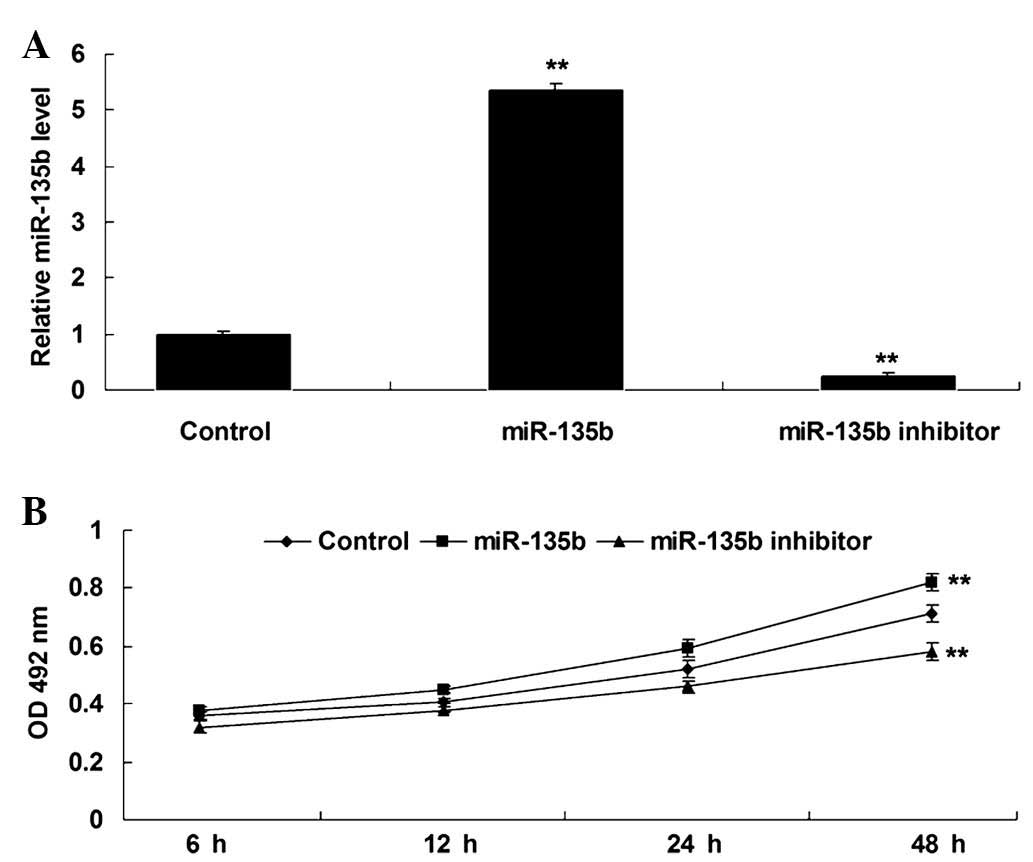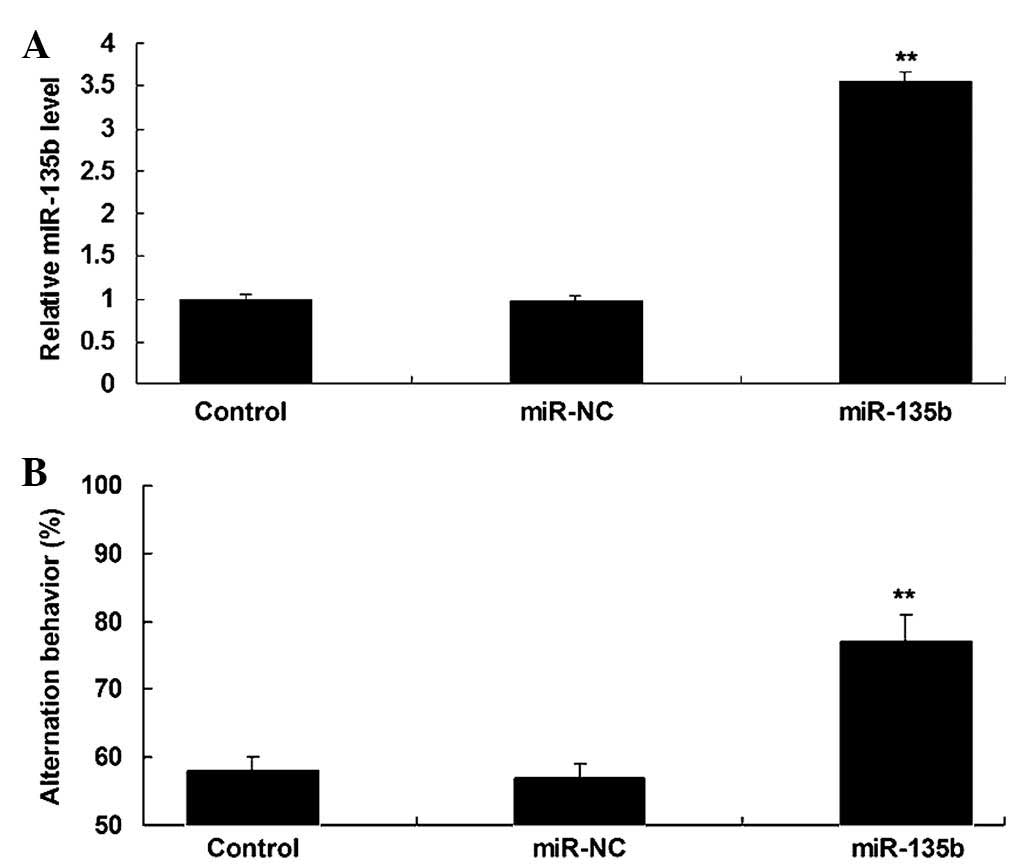|
1
|
Zlomuzica A, Dere D, Binder S, De Souza
Silva MA, Huston JP and Dere E: Neuronal histamine and cognitive
symptoms in Alzheimer's disease. Neuropharmacology. May
27–2015.(Epub ahead of print). View Article : Google Scholar : PubMed/NCBI
|
|
2
|
Dezsi L, Tuka B, Martos D and Vecsei L:
Alzheimer's disease, astrocytes and kynurenines. Curr Alzheimer
Res. 12:462–480. 2015. View Article : Google Scholar : PubMed/NCBI
|
|
3
|
Alzheimer's Association: 2015 Alzheimer's
disease facts and figures. Alzheimers Dement. 11:332–384. 2015.
View Article : Google Scholar : PubMed/NCBI
|
|
4
|
Lei X, Lei L, Zhang Z, Zhang Z and Cheng
Y: Downregulated miR-29c correlates with increased BACE1 expression
in sporadic Alzheimer's disease. Int J Clin Exp Pathol.
8:1565–1574. 2015.PubMed/NCBI
|
|
5
|
Ambros V: The functions of animal
microRNAs. Nature. 431:350–355. 2004. View Article : Google Scholar : PubMed/NCBI
|
|
6
|
Yang G, Song Y, Zhou X, Deng Y, Liu T,
Weng G, Yu D and Pan S: DNA methyltransferase 3, a target of
microRNA-29c, contributes to neuronal proliferation by regulating
the expression of brain-derived neurotrophic factor. Mol Med Rep.
12:1435–1442. 2015.PubMed/NCBI
|
|
7
|
Stary CM, Xu L, Sun X, Ouyang YB, White
RE, Leong J, Li J, Xiong X and Giffard RG: MicroRNA-200c
contributes to injury from transient focal cerebral ischemia by
targeting Reelin. Stroke. 46:551–556. 2015. View Article : Google Scholar : PubMed/NCBI
|
|
8
|
Denk J, Boelmans K, Siegismund C, Lassner
D, Arlt S and Jahn H: MicroRNA Profiling of CSF reveals potential
biomarkers to detect Alzheimer's disease. PLoS One.
10:e01264232015. View Article : Google Scholar : PubMed/NCBI
|
|
9
|
Yang G, Song Y, Zhou X, Deng Y, Liu T,
Weng G, Yu D and Pan S: MicroRNA-29c targets β-site amyloid
precursor protein-cleaving enzyme 1 and has a neuroprotective role
in vitro and in vivo. Mol Med Rep. 2015. View Article : Google Scholar
|
|
10
|
Zhu Y, Li C, Sun A, Wang Y and Zhou S:
Quantification of microRNA-210 in the cerebrospinal fluid and
serum: Implications for Alzheimer's disease. Exp Ther Med.
9:1013–1017. 2015.PubMed/NCBI
|
|
11
|
Liu CG, Wang JL, Li L, Xue LX, Zhang YQ
and Wang PC: MicroRNA-135a and −200b, potential Biomarkers for
Alzheimer's disease, regulate β secretase and amyloid precursor
protein. Brain Res. 1583:55–64. 2014. View Article : Google Scholar : PubMed/NCBI
|
|
12
|
Livak KJ and Schmittgen TD: Analysis of
relative gene expression data using real-time quantitative PCR and
the 2(−Delta Delta C(T)) method. Methods. 25:402–408. 2001.
View Article : Google Scholar : PubMed/NCBI
|
|
13
|
National Research Council (US) Committee
for the Update of the Guide for the Care and Use of Laboratory
Animals: Washington (DC) (8th). National Academies Press. US:
2011.
|
|
14
|
Hansen HH, Fabricius K, Barkholt P,
Niehoff ML, Morley JE, Jelsing J, Pyke C, Knudsen LB, Farr SA and
Vrang N: The GLP-1 receptor agonist liraglutide improves memory
function and increases hippocampal CA1 neuronal numbers in a
senescence-accelerated mouse model of Alzheimer's disease. J
Alzheimers Dis. 46:877–888. 2015. View Article : Google Scholar : PubMed/NCBI
|
|
15
|
Takagane K, Nojima J, Mitsuhashi H, Suo S,
Yanagihara D, Takaiwa F, Urano Y, Noguchi N and Ishiura S: Aβ
induces oxidative stress in senescence-accelerated (SAMP8) mice.
Biosci Biotechnol Biochem. 79:912–918. 2015. View Article : Google Scholar : PubMed/NCBI
|
|
16
|
Decourt B, Walker A, Gonzales A,
Malek-Ahmadi M, Liesback C, Davis KJ, Belden CM, Jacobson SA and
Sabbagh MN: Can platelet BACE1 levels be used as a biomarker for
Alzheimer's disease? Proof-of-concept study. Platelets. 24:235–238.
2013. View Article : Google Scholar : PubMed/NCBI
|
|
17
|
Shaw LM, Vanderstichele H, Knapik-Czajka
M, Clark CM, Aisen PS, Petersen RC, Blennow K, Soares H, Simon A,
Lewczuk P, et al: Alzheimer's Disease Neuroimaging Initiative:
Cerebrospinal fluid biomarker signature in Alzheimer's disease
neuroimaging initiative subjects. Ann Neurol. 65:403–413. 2009.
View Article : Google Scholar : PubMed/NCBI
|
|
18
|
Bibl M, Esselmann H, Lewczuk P,
Trenkwalder CF, Otto M, Kornhuber J, Wiltfang J and Mollenhauer B:
Combined analysis of CSF Tau, Aβ42, Aβ1–42% and Aβ1–40% in
Alzheimer's disease, dementia with Lewy bodies and Parkinson's
disease dementia. Int J Alzheimers Dis 2010. Article ID 761571.
2010.
|
|
19
|
Hébert SS, Horré K, Nicolaï L,
Papadopoulou AS, Mandemakers W, Silahtaroglu AN, Kauppinen S,
Delacourte A and De Strooper B: Loss of microRNA cluster
miR-29a/b-1 in sporadic Alzheimer's disease correlates with
increased BACE1/beta-secretase expression. Proc Natl Acad Sci USA.
105:6415–6420. 2008. View Article : Google Scholar : PubMed/NCBI
|
|
20
|
Müller M, Kuiperij HB, Claassen JA,
Küsters B and Verbeek MM: MicroRNAs in Alzheimer's disease:
Differential expression in hippocampus and cell-free cerebrospinal
fluid. Neurobiol Aging. 35:152–158. 2014. View Article : Google Scholar : PubMed/NCBI
|
|
21
|
Moon M, Cha MY and Mook-Jung I: Impaired
hippocampal neurogenesis and its enhancement with ghrelin in 5XFAD
mice. J Alzheimers Dis. 41:233–241. 2014.PubMed/NCBI
|
|
22
|
Cui Y, Xiao Z, Han J, Sun J, Ding W, Zhao
Y, Chen B, Li X and Dai J: MiR-125b orchestrates cell
proliferation, differentiation and migration in neural
stem/progenitor cells by targeting Nestin. BMC Neurosci.
13:1162012. View Article : Google Scholar : PubMed/NCBI
|
|
23
|
Mollinari C, Racaniello M, Berry A, Pieri
M, de Stefano MC, Cardinale A, Zona C, Cirulli F, Garaci E and
Merlo D: miR-34a regulates cell proliferation, morphology and
function of newborn neurons resulting in improved behavioural
outcomes. Cell Death Dis. 6:e16222015. View Article : Google Scholar : PubMed/NCBI
|
|
24
|
Buckley RF, Ellis KA, Ames D, Rowe CC,
Lautenschlager NT, Maruff P, Villemagne VL, Macaulay SL, Szoeke C,
Martins RN, et al: Phenomenological characterization of memory
complaints in preclinical and prodromal Alzheimer's disease.
Neuropsychology. 29:571–581. 2015. View Article : Google Scholar : PubMed/NCBI
|
|
25
|
Vassar R, Kuhn PH, Haass C, Kennedy ME,
Rajendran L, Wong PC and Lichtenthaler SF: Function, therapeutic
potential and cell biology of BACE proteases: Current status and
future prospects. J Neurochem. 130:4–28. 2014. View Article : Google Scholar : PubMed/NCBI
|
|
26
|
Yan R and Vassar R: Targeting the β
secretase BACE1 for Alzheimer's disease therapy. Lancet Neurol.
13:319–329. 2014. View Article : Google Scholar : PubMed/NCBI
|
|
27
|
Long JM, Ray B and Lahiri DK:
MicroRNA-339-5p down-regulates protein expression of β-site amyloid
precursor protein-cleaving enzyme 1 (BACE1) in human primary brain
cultures and is reduced in brain tissue specimens of Alzheimer
disease subjects. J Biol Chem. 289:5184–5198. 2014. View Article : Google Scholar : PubMed/NCBI
|
|
28
|
Zhu HC, Wang LM, Wang M, Song B, Tan S,
Teng JF and Duan DX: MicroRNA-195 downregulates Alzheimer's disease
amyloid-beta production by targeting BACE1. Brain Res Bull.
88:596–601. 2012. View Article : Google Scholar : PubMed/NCBI
|
|
29
|
Roshan R, Ghosh T, Gadgil M and Pillai B:
Regulation of BACE1 by miR-29a/b in a cellular model of
Spinocerebellar Ataxia 17. RNA Biol. 9:891–899. 2012. View Article : Google Scholar : PubMed/NCBI
|
|
30
|
Fang M, Wang J, Zhang X, Geng Y, Hu Z,
Rudd JA, Ling S, Chen W and Han S: The miR-124 regulates the
expression of BACE1/β-secretase correlated with cell death in
Alzheimer's disease. Toxicol Lett. 209:94–105. 2012. View Article : Google Scholar : PubMed/NCBI
|















